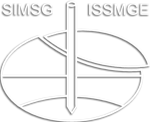Seabed and sub-seabed boulders as an engineering hazard in the marine environment; a risk mitigation strategy for subsea cables
Seabed and sub-seabed boulders as an engineering hazard in the marine environment; a risk mitigation strategy for subsea cables
Every subsea cable development presents a unique set of conditions and constraints. The exact approach to seabed and sub-seabed boulder mitigation work is defined not only by the nature of the environment, but also the options open to the developer in terms of financial budgets and available construction timescales. Boulders represent a significant geohazard for trenching and installation operations of subsea cables. This paper proposes a comprehensive risk mitigation strategy for seabed and sub-seabed boulders in the marine environment. Once the magnitude of boulder risk is known through appropriate surveys and risk assessments, the following steps can be considered: avoidance, removal, reduction and/or relocation or remediation of residual risks. Working through these steps ensures a suitable mitigation strategy is followed, reducing the risk through adequate design, installation and remediation planning.
L. J. Burley; E. Tataki; H. Taylor; Victor Terente; N. Dyer
18th European Conference on Soil Mechanics and Geotechnical Engineering (ECSMGE2024)
B - Geohazards
